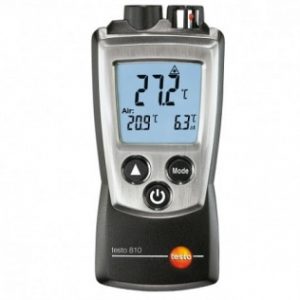An infrared thermometer is a tool that can save time and money by indicating temperature readings more effectively. By using an infrared thermometer, you will be able to save on energy costs. There are several different types of infrared thermometers available in the market today. Here are some of their main uses:
 Infrared thermometers come in handy in the home and office to read the temperature. In both of these applications, you should look out for products with high emissivity, reflective surfaces and other features that help determine the accuracy of the reading. When purchasing an infrared thermometer, the selection tip should be on features such as surface temperature, humidity level and HVAC efficiency.
Infrared thermometers come in handy in the home and office to read the temperature. In both of these applications, you should look out for products with high emissivity, reflective surfaces and other features that help determine the accuracy of the reading. When purchasing an infrared thermometer, the selection tip should be on features such as surface temperature, humidity level and HVAC efficiency.
Home applications. There are several ways to read Instrument-Choice infrared thermometer at home. The most common way is by getting the temperature readings from the object’s surface or its reflection. If the surface has no insulation, it will reflect infrared radiation, which will reduce the temperature readings significantly. High reflective surfaces, such as shiny cabinets, kitchen countertops, mirrors and windows, will also absorb infrared radiation, significantly decreasing the accuracy of your measurement.
Office applications. If you have an infrared thermometer that can read temperature from a direct line, you can place it just about anywhere that is not too reflective and free from obstructions like desks or furniture. However, if you have a shielded room or cubicle, it would be pointless to place your thermometer there. To compensate for this, you can place the thermometer in one of the three weak spots in the room, which are reflected light, near fluorescent lighting or somewhere that the radiation is blocked from entering the room.
Commercial settings. It is possible to get an infrared thermometer that will read your temperature from many commercial facilities. However, since you won’t get an accurate reading without getting closer to the object to be measured, it is advisable to place the instrument in one of the three reflective sides to avoid measurement errors due to measurement uncertainties. This is important because it is difficult to get a reliable measurement of temperature from objects with no additional insulation. Insulation affects the accuracy of the IR thermometer measurement.
Industrial/ laboratory settings. There are infrared thermometers that are designed for industrial and laboratory settings. They can measure temperatures from a distance of up to 40 inches, making them ideal for industrial settings. These thermometers come equipped with a probe inserted into the work surface, allowing the reading to be either received through a surface-mounted probe or a station-top probe.
Laser-based thermometers. Infrared measurements can also be achieved through the use of a laser probe. A laser is used to heat the surface being measured, which in turn causes the atoms to emit infrared radiation. The amount of energy emitted by the atoms is measured as a percentage of the total amount of light absorbed. Because the energy level is directly related to the temperature, the measurement of average temperatures is exact and can be utilized for precise measurements of infrared temperatures.